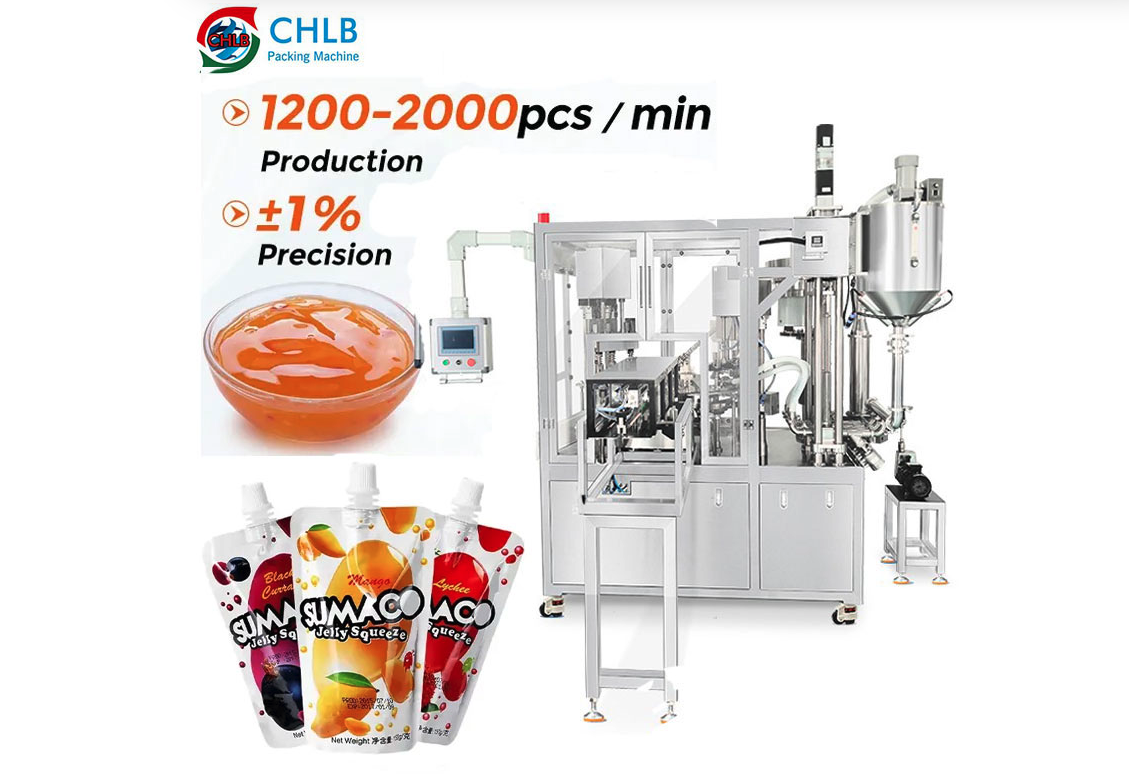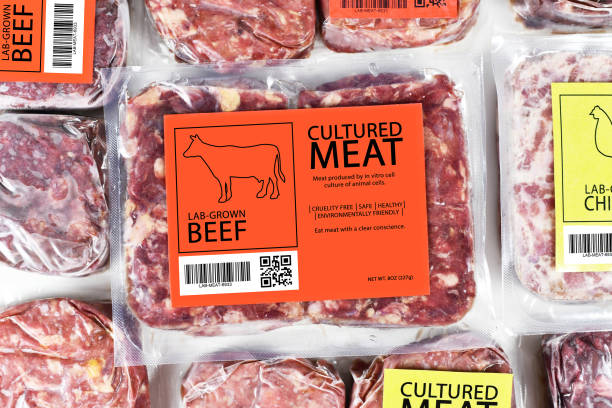Les sachets sont une solution d'emballage polyvalente et efficace utilisée dans toutes les industries, de la nourriture aux soins personnels. Ils vous permettent de gérer plus facilement, magasin, et porter des produits tout en les gardant frais et protégés.
Dans cet article, Nous allons explorer leurs principales fonctionnalités, Applications communes, Comment ils se comparent aux packs de bâton, et facteurs clés pour vous aider à choisir le bon format.
Que sont les sachets?

Définition des sachets
UN sachet est un petit, Ensemble flexible scellé conçu pour contenir une quantité mesurée de produit - il peut être de la poudre, granulés, liquide, coller, ou même de petits articles solides. En termes d'emballage, Un sachet n'est pas seulement un «petit sac». Il est conçu avec des matériaux spécifiques, scellés, et les couches de barrière pour garder le contenu à l'abri de l'humidité, oxygène, ou contamination. Parce que chaque pack contient une partie fixe, Cela améliore la précision du dosage, hygiène, et facilité d'utilisation pour vous et vos clients.
Types de sachets par style sac
Sachets plats
C'est le pack unique classique unique que vous avez probablement géré d'innombrables fois. Les sachets plats sont minces, léger, et facile pour la garniture et le scellement à grande vitesse. Ils fonctionnent particulièrement bien pour les poudres contrôlées par portion, sauces, ou condiments. Et ils gardent vos coûts et votre matériel à utiliser bas tout en offrant une présentation soignée à l'utilisateur final.
Bâton / Sachets minces
Si votre produit est censé être versé ou consommé en déplacement, sachets de bâton vous donner cette flexibilité. Leur long, une forme étroite les rend faciles à déchirer et à verser, Et vous permet d'emballer plus d'unités par carton - un vrai plus pour votre logistique et votre efficacité.
Sachets à grenages
Parfois, vous avez besoin de plus de poids de remplissage sans passer à un package complètement différent. Les sachets à grends se développent sur les côtés pour maintenir plus de volume dans la même empreinte. Ils sont souvent choisis pour les mélanges secs, granulés, ou même de petits articles médicaux où la capacité et la stabilité supplémentaires.
Se lever / Sachets en forme
Lorsque l'image de marque et l'attrait des étagères sont aussi importants que la fonction, Les sachets debout ou en forme vous aident à vous démarquer. Avec un gousset inférieur ou un contour personnalisé, Ils peuvent littéralement rester debout et signaler la «prime» à votre client - idéal pour les soins personnels de la taille d'un voyage, équipements de l'hôtel, ou aliments de grande valeur.
Utilisations courantes des sachets dans toutes les industries

Industrie alimentaire
Vous avez probablement vu des sachets pour un café instantané, poudres de thé, mélanges de boissons en poudre, sucre, et condiments. Ils facilitent le goût d'un goût cohérent à chaque fois, Que vous brassiez votre café du matin ou que vous ajoutiez du sucre à une boisson. Pour les fabricants, Les sachets réduisent les déchets, Simplifier le stockage, et rationaliser la distribution, Surtout pour les produits à service unique. En même temps, Ils protègent les ingrédients de l'humidité, air, et contamination, Aider le produit à rester frais plus longtemps.
Fournitures médicales
Chaque sachet délivre la dose exacte, Réduire le risque d'erreurs et s'assurer que ce que vous prenez est précisément ce qui est prévu. La conception scellée maintient également l'hygiène et la puissance jusqu'à ce que vous soyez prêt à l'utiliser. Pour des produits comme les vitamines, probiotiques, ou médicaments en poudre, Cela signifie que l'efficacité sur laquelle vous comptez est conservée jusqu'au dernier moment.
Soins personnels et cosmétiques
Les sachets sont extrêmement pratiques pour les shampooings de taille de voyage, lotions, crèmes, et masques pour le visage. Ils vous permettent de transporter facilement des produits en déplacement sans se soucier des déversements. Ils permettent également aux marques d'offrir des échantillons ou des tailles d'essais, Vous donnant la possibilité d'essayer un produit avant de vous engager dans une version pleine grandeur. L'emballage garde les produits hygiéniques, portable, et prêt à être utilisé chaque fois que vous en avez besoin.
Produits industriels et chimiques
Produits comme les détergents, engrais, et les produits chimiques de traitement de l'eau en poudre sont portionnés en sachets pour prévenir la surutilisation et réduire les déchets. Ils rendent également la manipulation plus sûre et plus efficace, qui est essentiel à la fois dans la fabrication et la distribution. Parce que les sachets sont légers, empilable, et facile à transporter, Ils simplifient la logistique tout en gardant les expéditions en vrac organisées et sans déversement.
Hôtel et fournitures de voyage
Hôtels, compagnies aériennes, et les croisières utilisent souvent des sachets pour des articles de toilette et des équipements à usage unique, comme le shampooing, conditionneur, dentifrice, Et même de petits savons ou des pantoufles jetables. Cela garantit que chaque article est hygiénique, pratique, et prêt à l'emploi quand vous en avez besoin, que ce soit dans une chambre d'hôtel ou sur un vol. Pour le personnel, Les sachets pré-portionnés simplifient le réapprovisionnement et maintiennent une qualité cohérente pour chaque invité.
Sachet vs Stick Packs
Dans l'industrie des emballages, «Sachet» fait généralement référence à plat, trois- ou des sachets à quatre côtés, tandis que les «sachets de bâton» sont longs, Poches étroites faites avec une verticale (centre) sceau et deux joints horizontaux. Les regarder côte à côte peut vous aider à décider lequel correspond à votre produit et vos besoins de production.
Table de comparaison rapide
| Dimension | Sachet plat | Sachet de bâton |
|---|---|---|
| Forme et structure | Court et large; empilement stable | Long et étroit; emballage compact |
| Taille et gamme de portions | Flexible, Micro à Medium Rempls | Petit, portions fixes (2–20 g) |
| Scellement et intégrité des emballages | Plusieurs types de joints; Strong pour les liquides | Sceaux longitudinaux et finaux; Meilleur pour les poudres |
| Comportement de remplissage et précision de dosage | Manipuler les liquides, pastes, poudres | Le canal étroit améliore le dosage des poudres |
| Vitesse de production et débit | Élevé mais variable; Runs flexibles | À très grande vitesse; sortie uniforme |
| Utilisation des matériaux et performances de la barrière | Stratifiés plus épais / multicouches; protection solide | Films plus minces; adéquat pour les poudres |
| Adébabilité du produit | Sauces, assaisonnement, soupes, produits visqueux | Boissons instantanées, café en poudre, sucre, suppléments |
Forme et structure
- Sachet plat: Plus courts et plus larges que les sachets de bâton, généralement fabriqué comme trois- ou packs scellés à quatre côtés, avec de petits goussets en option pour un volume supplémentaire. La forme plate s'empile plus stable et se remplit plus flexible que les sachets de bâton.
- Sachet de bâton: Tube long et étroit. Les joints coulent sur la longueur avec des joints transversaux aux extrémités, Créer un paquet mince pour les couleurs simples. La forme favorise la distribution rapide et la densité d'emballage compacte.
Taille et gamme de portions
- Sachet plat: Très flexible. Utilisable pour les micro-portions jusqu'à des remplissages moyens, Généralement de quelques grammes à des dizaines de grammes ou plus lorsqu'ils sont en phase. Bon lorsque vous avez besoin de tailles de remplissage variables.
- Sachet de bâton: Optimisé pour petit, des portions uniques fixes. Couramment utilisé dans le 2 à 20 gamme de grammes. Meilleur quand vous avez besoin d'uniforme, portions reproductibles à grande échelle.
Scellement et intégrité des emballages
- Sachet plat: Plusieurs options d'étanchéité sont disponibles, y compris trois côtés, à quatre côtés, ailette, et sceaux arrière. Cela permet des joints plus forts pour les liquides et les stratifiés à barrière plus élevée pour les produits sensibles.
- Sachet de bâton: L'étanchéité se concentre sur les joints longitudinaux et d'extrémité qui produisent un tube serré. La forme étroite donne une géométrie de joint cohérente et est efficace pour les poudres sèches, mais peut être moins indulgent pour les liquides visqueux.
Comportement de remplissage et précision de dosage
- Sachet plat: Gère une gamme plus large de types de produits. Les liquides et les pâtes sont plus faciles à remplir ici car le pack peut accepter un comportement d'écoulement varié. Le dosage de la poudre est précis mais peut avoir besoin de mesures anti-pontage pour les poudres de faible débit.
- Sachet de bâton: La géométrie aide à la précision du dosage des poudres à écoulement libre. Le canal étroit réduit la ségrégation et améliore le contrôle du poids, Surtout pour les mélanges et suppléments de boissons.
Vitesse de production et débit
- Sachet plat: Les vitesses de production typiques sont élevées mais varient selon le type de produit et la machine. Il donne un débit fort pour les gammes de produits mixtes et les courses flexibles. Les changements entre les tailles peuvent prendre plus de temps.
- Sachet de bâton: Conçu pour une grande vitesse, sortie uniforme. Une fois configuré, Le débit par voie est plus élevé et le coût unitaire baisse avec le volume. La configuration de la précision et de l'étalonnage est importante pour maintenir la cohérence.
Utilisation des matériaux et performances de la barrière
- Sachet plat: Plus facile à utiliser les stratifiés plus épais ou multicouches qui offrent une protection supérieure à l'humidité, oxygène, et la lumière. Cela les rend préférables pour les aliments sensibles et les produits pharmaceutiques.
- Sachet de bâton: Utilise généralement plus mince, films plus légers pour minimiser le coût par unité. Les obstacles peuvent être suffisants pour de nombreuses poudres, mais peut ne pas correspondre à la protection des stratifiés lourds pour les produits très sensibles.
Adébabilité du produit
- Sachet plat: Sauces, assaisonnement, produits visqueux, soupes à servir, Mélanges secs à plus grande portion, et certaines crèmes topiques pharmaceutiques. Utilisez-le lorsque le produit a besoin d'une protection plus forte ou n'est pas fluide.
- Sachet de bâton: Mélanges de boissons instantanées, café en poudre, sucre, Suppléments à dose unique et vitamines, édulcorants en poudre. Utilisez-le lors de la déversement rapide et des portions simples précises.
Choisir entre les sachets et les packs de bâton

Avant de décider, Il aide à examiner quelques facteurs clés qui peuvent vous guider vers la meilleure option.
Type de produit
Différents produits se comportent différemment pendant l'emballage. Poudres, granulés, et les liquides ont chacun des propriétés d'écoulement uniques. Si vous travaillez avec des liquides collants ou visqueux, Sachets - en particulier les conceptions plates ou en gousse. Poudres à écoulement libre, d'autre part, Souvent performance dans les packs de bâtons, qui améliorent la précision des portions et réduisent les déchets pendant le remplissage.
Taille de la portion
La partie que vous souhaitez offrir à vos clients affecte votre choix. Des portions monocoles entre 2 et 15 grammes sont idéales pour les packs de bâton, facilitant la gestion de vos clients ou des utilisateurs finaux. Portions plus grandes, comme 20 à 50 grammes, sont plus pratiques dans les sachets, offrir une stabilité et un coulage plus facile.
Exigences de barrière
Produits sensibles à l'humidité, oxygène, ou la lumière a besoin d'une forte protection. Les sachets vous permettent d'utiliser des stratifiés multicouches et des films plus épais pour une performance de barrière supérieure. Les packs de bâton utilisent généralement des films plus minces pour économiser sur les coûts des matériaux, Ce qui fonctionne pour la plupart des poudres mais peut ne pas suffire pour les ingrédients très sensibles.
Vitesse et coût de production
Les packs de bâton sont conçus pour, production à volume élevé, Assurer des parties précises et une manipulation manuelle réduite. Les sachets vous donnent une plus grande flexibilité sur différents produits et tailles de portions, ce qui peut gagner du temps sur les lignes multi-produits et gérer les exigences de remplissage plus complexes.
Commodité de l'utilisateur final
Réfléchissez à la façon dont vos clients ou utilisateurs finaux interagiront avec le produit. Les packs de bâtons sont parfaits pour, Version contrôlée dans des tasses, bouteilles, ou d'autres conteneurs. Les sachets fonctionnent mieux lorsque vos utilisateurs ont besoin d'un dosage mesuré, saupoudrage, ou plongeon, leur donner plus de contrôle sur le produit.
Image de marque et esthétique
Les sachets offrent une surface plus grande, Vous pouvez donc inclure des logos détaillés, instructions, ou des informations nutritionnelles. Les packs de bâton ont un mince, profil moderne qui séduit les consommateurs qui apprécient le design élégant et la portabilité, idéal pour les produits en déplacement.
Réflexions finales
Les sachets et les stick packs offrent chacun des avantages uniques selon le produit, taille des portions, et les besoins de production. Choisir le bon format garantit l’efficacité, protection du produit, et une meilleure expérience pour l'utilisateur final.
Quel que soit le style d’emballage avec lequel vous travaillez, CHLB fournit machines d'emballage de haute qualité dans diverses industries, capable de gérer différents formats avec précision et fiabilité. Avec le bon équipement, vous pouvez rationaliser la production et maintenir une qualité constante, rendre vos opérations plus fluides et plus efficaces.















